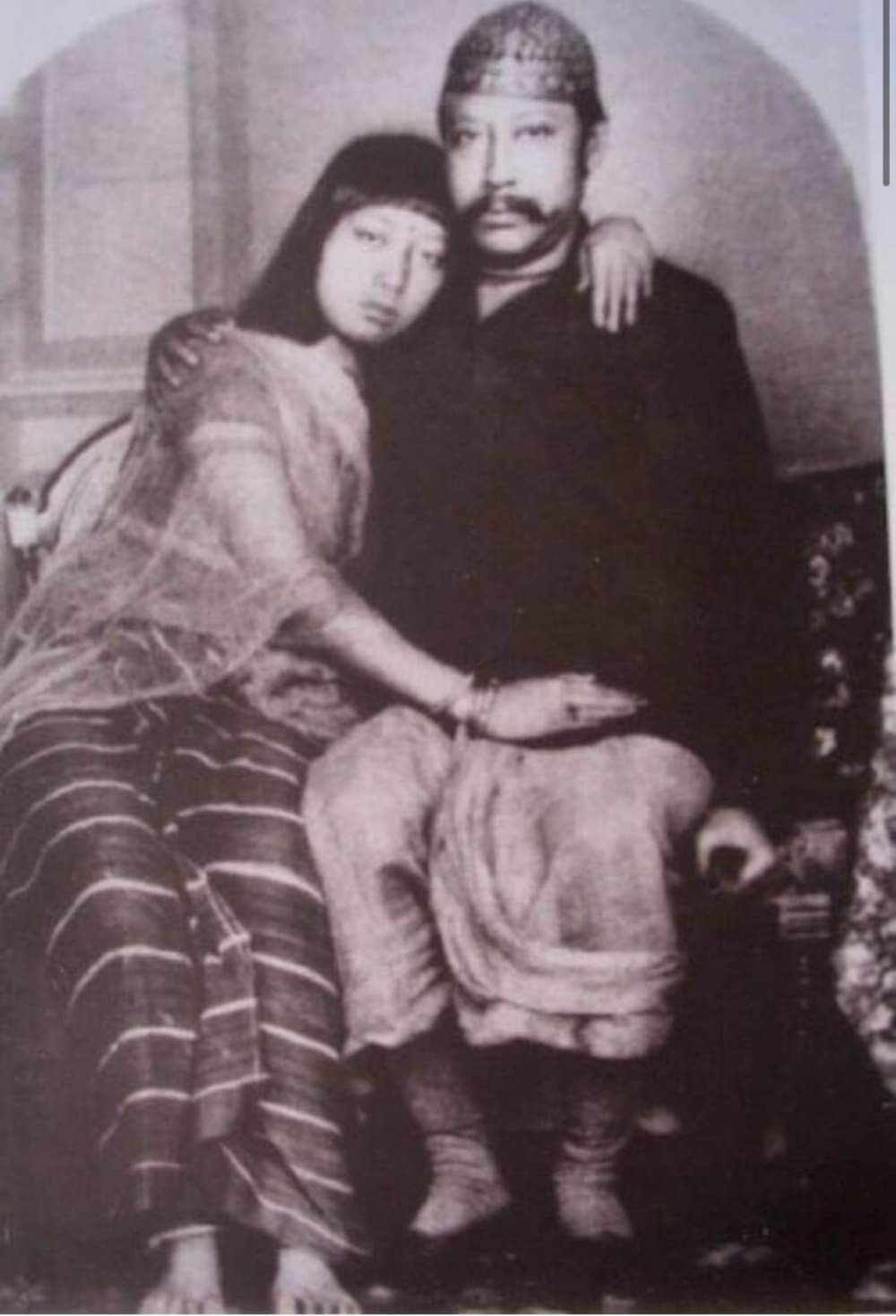
Maharaja Bir Chandra Manikya: India’s Photography Pioneer and the Creator of the First ‘Selfie’ in 1880
Varun Mourya Maripala
Maharaja Bir Chandra Manikya of Tripura, an ardent photography enthusiast, not only made a mark in history as the first Indian king to organize an annual photographic exhibition at his palace, but he also pioneered an innovative technique that led to the creation of India’s first ‘selfie’.
In 1880, Maharaja Bir Chandra Manikya utilized a black lever attached to a triggering device, equipped with a long wire shutter control, to capture a photograph of himself. This ingenious setup, allowing him to take a self-portrait without the assistance of another person, is considered the earliest known ‘selfie’ in India. His innovative approach showcased his dedication to exploring the boundaries of photography during an era when the medium was still in its infancy.

Maharani Khuman Chanu Manmohini Devi, his wife, was also an amateur photographer, sharing and supporting her husband’s passion for this emerging art form. The royal couple’s enthusiasm for photography not only brought this creative pursuit into the spotlight but also inspired many others to explore and embrace the art.
The Maharaja’s annual photographic exhibitions at the Tripura palace became significant cultural events, drawing attention to the evolving field of photography. His contributions laid the groundwork for future photographers in India, demonstrating that photography could be both a professional and personal endeavor.
Maharaja Bir Chandra Manikya’s legacy as a photography pioneer is remembered not just for his exhibitions but also for his innovative spirit that led to the first Indian ‘selfie’. His work continues to be celebrated as a milestone in the history of photography in India.

Era of digital and social media
In an era long before smartphones and social media, the art of the selfie found its origins in the royal palace of Tripura. Maharaja Bir Chandra Manikya and Maharani Khuman Chanu Manmohini Devi, the visionary rulers of Tripura, are credited with creating what is believed to be India’s first selfie in 1880.
Maharaja Bir Chandra Manikya, who reigned from 1862 to 1896, was a transformative figure in the modernization of Tripura. His contributions included the urbanization of Agartala, establishing it as a modern city with the foundation of Agartala Municipality in 1871. Beyond his administrative and architectural accomplishments, the Maharaja was an avid photographer. He organized the first annual photographic exhibition at his palace and established a fully equipped studio known as Foto ka Karkhana in Madho Niwas.
The Maharaja’s third wife, Maharani Manmohini Devi, shared his passion for photography. She trained under his guidance and quickly became a master photographer. Together, they broke new ground in the art of photography in India.
In 1880, Maharaja Bir Chandra Manikya captured a tender moment with his queen using a black lever attached to a triggering device with a long wire shutter control. The photograph, featuring the Maharaja’s arm around the Maharani, is considered India’s first selfie. This intimate portrait stood out in an era when photography was dominated by Europeans and characterized by formal, stoic compositions. The image, showing the Maharani’s head resting on the Maharaja’s shoulder and their arms intertwined, conveyed a rare glimpse of affection and emotion.

Maharani Manmohini Devi’s contributions to photography were significant. She is regarded as India’s first female photographer and held exhibitions in the palace showcasing both her and her husband’s work. The Camera Club of the Palace of Agartala was even featured in the May 1890 issue of the Journal of the Photographic Society of India.
The legacy of Maharaja Bir Chandra Manikya and Maharani Manmohini Devi continued through their descendants, who upheld the family’s photographic traditions. Their sons, Samarendra Chandra Dev Burman, Radha Kishore, and Brajendra Kishore, contributed to the evolution of photography in India.
Today, the images captured by the Tripura royals, including the historic first selfie, continue to be displayed in exhibitions across India. These photographs are a testament to the innovative spirit and enduring legacy of Maharaja Bir Chandra Manikya and Maharani Manmohini Devi, who defied tradition and embraced the art of photography with passion and creativity.


